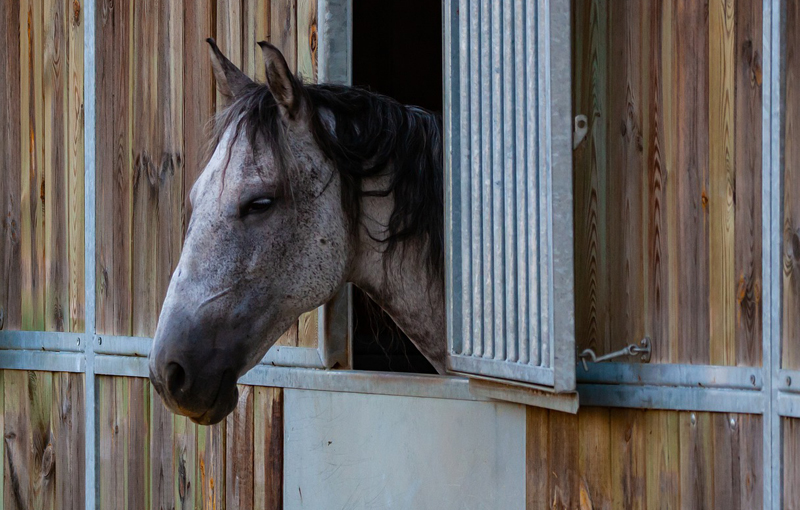The FEI has scrambled to clarify its new “missed flag” rule before Badminton’s cross-country this Saturday (May 4th), but discontent remains amongst riders and other stakeholders.
William Fox-Pitt and the Eventing Riders Association (ERA) are among those who feel the new guidelines do “not go far enough” and are continuing to lobby for further change. Fox-Pitt even revealed he is “unable to support” the clarification statement sent out earlier this week by the FEI eventing technical committee, on which he sits as elected athletes’ representative.
Eventing chair David O’ Connor was at Badminton today (May 3rd) to brief officials. He said the topic was not a “closed book” and he hoped a stakeholder meeting would be held later this year before any review of the rule is presented to the FEI General Assembly.
A new FEI statement (see below, in full) emphasizes that riders must have the benefit of the doubt unless the rule breach is “easy” to spot at the initial review of video evidence when there is a dispute. The intention is not to give an automatic 15 penalties to anyone dislodging a marker pole. The clarification also demands an instant decision so as not to delay the competition results, and 15 cross country jumping penalties on a rider’s results sheet will not affect his Minimum Eligibility Requirement (MER.)
The new rule, effective from January 1st, replaces the previous one which was ambiguous about whether the fence has been jumped clean if the horse’s hindlegs pass the wrong side of the flag or barely take off at all. It now requires the whole trunk of the horse to pass the correct side.
But it caused a torrent of disputes at two spring CICs in the UK, Belton Park and Bicton, prodding one of Christopher Burton’s owners Kate Walls to launch a petition, which as of May 2nd has gathered over 4,200 signatures.
One confusion may result from Belton and Bicton bolting their FEI classes onto national events at which some of the jump judges may be less experienced.
At the Kentucky horse trials last weekend, first major three-day of the year, judges were given a detailed briefing by FEI committee chair David O’Connor. There were extra persons on the course filming every fence, with a direct digital links to the ground jury.
Will Coleman was Kentucky’s most notable casualty of the new rule, costing him fifth place, though when Ariel Grald took a pole with her for several strides after it caught under her leg, she remained unpenalized.
Draft eventing rules for 2019 went out for consultation last summer as part of the established FEI process. ERA and the International Eventing Officials Association (IHEA) submitted strong representations about the missed flag proposals at the time, and have continued to lobby. But their comments were not published in the consultation summary distributed prior to the FEI General Assembly. This showed input about the “missed flag” proposals from just five of the FEI’s 133 member national federations – Britain, Ireland, Germany, New Zealand and Switzerland.
ERA’s Bruce Haskell acknowledged that FEI procedure does not allow a full change to a FEI rule during the season. There is a waiver possibility for emergencies under the FEI board’s special powers but it is rarely applied.
“The additional guidelines are a positive initiative by the FEI eventing committee to address uncertainty for athletes, officials and wider stakeholders but in our opinion do not go far enough,” said Haskell.
“The central issue remains as follows: the rule states that if any part of the body strays outside the line where the flag was originally positioned it should be penalized, therefore a horse who jumps the correct side of the flag but moves or dislodges it with the shoulder or pelvis is judged as not clear and is awarded 15 penalties.
“Despite the overwhelming majority of the eventing community sharing our view, we are all bound by a rule stating otherwise and today’s clarification does not change that.”
*There has been further shock for the UK eventing community with news that Belton Park, a key pre-Badminton event, will run no more. Belton is one of the many historic houses in the UK owned by the National Trust, who say the horse trials cause undue damage to Belton’s parkland. The decision was only notified to organizer Stuart Buntine this week. Unaware the National Trust was even considering cancellation, Buntine was already planning the event’s 40th anniversary celebrations in 2020.
Eventing Missed Flag Clarification in Full
Clarification 2019 Eventing rules Art 549.2 – Run-out – Missing a flag
Further to the request of Athletes, Organisers and Officials, the Eventing Committee has agreed to the following clarification to ensure consistency of the application of the 2019 Eventing rules Art 549.2 – Run-out – Missing a flag as follows:
a) Run-Out: A Horse is considered to have run out (20 penalties) if, having been presented at an element or obstacle on the course, it avoids it in such a way that the body of the Horse (head, neck, shoulders and pelvis – legs are not included) fail to pass between the extremities of the element or obstacle as originally flagged. Continuing on course without re-presenting will incur elimination.
b) Missing a flag: A Horse is considered to have missed a flag (15 penalties) if the Horse jumps the dimension of the obstacle and the majority of the Horse’s body (as defined above) passes through the flags. This means that some part of the body is not inside the flags (e.g. one shoulder, or one shoulder and part of one hip).
c) The Horse will have successfully negotiated the fence, if the body of the Horse (as defined above) has passed the fence as originally flagged (i.e. the body but not all the legs are inside the flag is considered clear).”
The Eventing Committee has agreed that the following considerations must be taken into account when judging the run-out /flag situation on Cross Country:
1. The Fence Judge is responsible for taking a decision as to a penalty to be awarded to the combination
2. Knocking down a flag will not entail an automatic penalty
3. The Ground Jury will only review any specific requests for clarification made by a Fence Judge or an Athlete after the penalty has been awarded
4. Video reviews should be done immediately by the TD and/or GJ if there is a doubt, not left until after the XC so scores can be published and updated during competition
5. When reviewing a video, it must be easy to decide if the horse is inside the flags, if it is necessary to review several times, the decision should be made in favour of the rider.
6. As always if there is a doubt give the benefit of the doubt to the competitor.
7. 15 penalties on Cross Country will maintain the MER on Cross Country
More from Horse-Canada:





